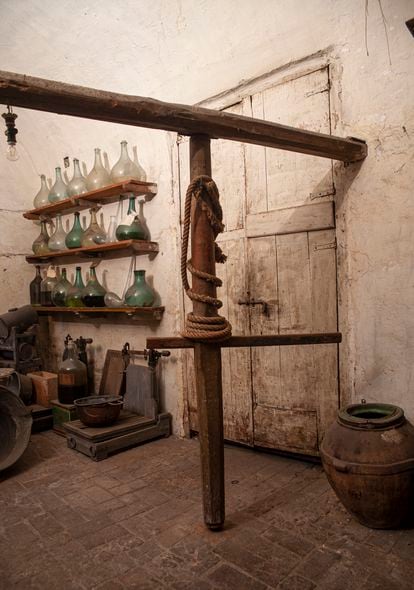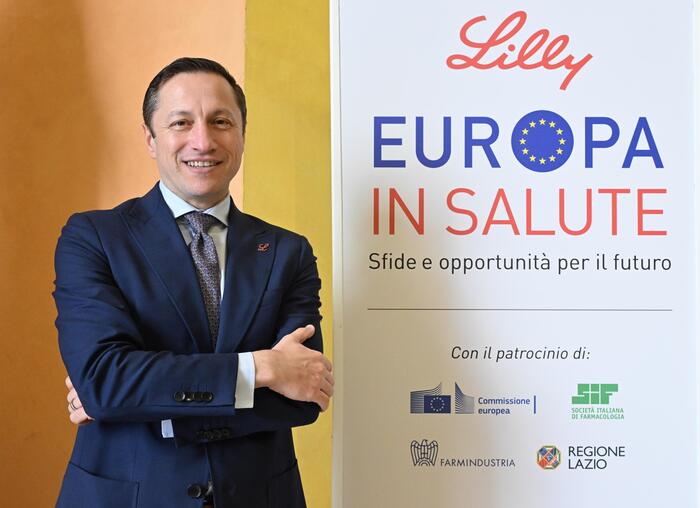Crossing the doors of the old spice shop of Santa Maria della Scala in Rome, the visitor enters with all the senses into a world frozen in time.
The smells, the colors, the furniture, the paintings, the instruments, the poisons, the ancient recipes, the raw materials that are preserved intact in this pharmacy, unique in its kind and one of the oldest in Europe, speak of another era and condense millennia of wisdom.
They also provide valuable information on pharmaceutical science to a multidisciplinary and international team of researchers who have studied for years the compounds and substances that are guarded in this extraordinary place, located in the heart of the Trastevere neighborhood of the Eternal City.
More information
Trastevere.
The pagan quarter of the holy city
Added to its scientific value is its artistic and cultural interest. This old baroque Rome apothecary, opened by the Discalced Carmelite monks in the 17th century and in operation until the mid-20th century, will become a physical and virtual museum thanks to the
Hispanic Rome
project of the University of Valencia, which studies spices as part of the Spanish cultural heritage in Rome.
In the dozens of boxes, test tubes and pots that remain covered in dust, in the same place where the monks left them, the researchers have identified, through physical-chemical analysis and cultural studies, a great multitude of spices, herbs, compounds and Raw materials of all kinds and origin. Many come from the Arab world, from the ancient Mediterranean: Greece, Rome, Etruria; from Egypt, the Middle East, India, Ceylon, Thailand and even from Mexico or Peru. “It is a journey through time through drugs or medicinal plants, spices, aromas. It is a mosaic of intangible heritage around the knowledge of the drug in the Mediterranean”, María Luisa Vázquez de Ágredos Pascual, director of the Roma Hispana project, tells this newspaper.
Some jars and materials from the spice shop of Santa María de la Scala, in Rome.Rafael Garay Peset (EASD-València)
In the sales room of the apothecary, located on the first floor of the Carmelitas Descalzos convent, a large container immediately catches one's eye. It was used to store the teriaca, explains Father Marco, one of the few monks who still live in the convent, to a handful of visitors. The priest speaks of this very popular preparation in ancient times, made up of more than 70 ingredients of vegetable, animal or mineral origin, among which stand out, among others, opium or viper meat. It emerged as a universal antidote against all kinds of poisons in the second century BC. C., at the request of the king of Ponto Mitríades, who was trying to protect himself against possible poisoning. Some historians have pointed out that when the monarch was defeated by the Roman general Pompey he tried to commit suicide by ingesting poison to avoid being captured,but being immunized against all kinds of toxins, he ended up asking one of his soldiers to kill him with the sword. The theriac formula became a kind of panacea during the Middle Ages and its use extended until the 19th century.
It is just one of the multiple formulas that are preserved in the old spice shop, where the poison cabinet, the counter, the rudimentary cash register or the striking frescoes and mural paintings are also kept intact. And the posters that advertised the flagship products of the pharmacy: the anti-pestilence water, a proprietary and secret formula invented by Fray Basilio; lemon balm water, with relaxing properties; and the “de la Scala” water, with an analgesic effect.
Through a small door from the sales room there is access to the back room, presided over by an immense cabinet, decorated with portraits of famous figures in medicine such as Hippocrates or Galen, full of sandalwood boxes that still store raw materials such as deer horns, to which restorative properties were attributed, or insects used to color some preparations.
One of the rooms of the spice shop of Santa María de la Scala.Roma Hispana 2020 Project
Also part of the facilities of the old apothecary is a galenic laboratory, still full of test tubes and inventories of herbs, where complex formulas were prepared. Or the
liquorifice
, where substances were distilled, seeds crushed, plants dried, or pills compacted. The entire complex can be visited a few days a week, only in small groups, prior reservation managed directly by the monks.
The old spice shop of Santa María de la Scala opened its laboratories in the 17th century for internal use by the friars and a century later it opened its doors to the general public. In the 19th century it gained the name of "pharmacy of the Popes", since within its walls the remedies that cured the pontiffs' illnesses were made. It closed permanently in 1954, with the rise of secular pharmacies.
Vázquez de Ágredos Pascual explains that the order of the Discalced Carmelites, of Spanish origin, which later received permission from Pope Borgia to also settle in Rome, controlled the trade routes with the East and West Indies. Hence, many of the pharmacy prescriptions come from these places. “That is why we explain that in Santa María de la Scala there are substances and complex formulations that come from the medicinal knowledge of ancient America, which had already been conquered by the Spanish, we also see healing traditions that come from Ayurvedic medicine, which connects with India. There are also Islamic medicine products, something that is very easy since the conventual pharmacy is linked to a Spanish order. We are facing a crucible of medicinal knowledge through time”,the historian emphasizes. And he adds: “It is a journey that allows you to dive into different cultures through drugs, spices and aromas, because the three concepts are connected, in ancient times and until today many drugs have been spices and aromas, such as saffron or laurel”.
Detail of one of the shelves of the old spice shop.Rafael Garay Peset (EASD-València)
Scientists have no doubt that they are facing a diamond in the rough with immense possibilities.
For this reason, after the first results, the project was opened up to the collaboration of numerous international laboratories and centers in Spain, Italy, Switzerland, France and Portugal, such as the molecular archeology center at the Sorbonne in France.
"The objective is to study, musealize, with itineraries for visitors, and spread the species," says Vázquez de Ágredos Pascual.
And he adds: "We seek an experiential tourism, work with the senses, so that the visitor can smell, taste, touch."
The Valencia School of Art and Superior Design and the Italian public research organization ENEA are working to reproduce the spice shop in 3D and create a virtual museum.
Interior of the spice shop of Santa María de la Scala, in Rome.Rafael Garay Peset (EASD-València)
In a recent study, the conclusions of which will be presented in a few weeks in the Italian capital, scientists have discovered, among other things, that the friars had a botanical garden to provide themselves with raw materials on the spectacular Roman Gianicolo hill.
In addition, they are preparing a European route of spices, aromas and medicinal plants, which covers the scenarios and cultures that have been united since ancient times by the use of aromas, "understood as one of the great keys on which to sustain a common historical memory and our Euro-Mediterranean cultural identity”, and which will undoubtedly pass through Rome.









